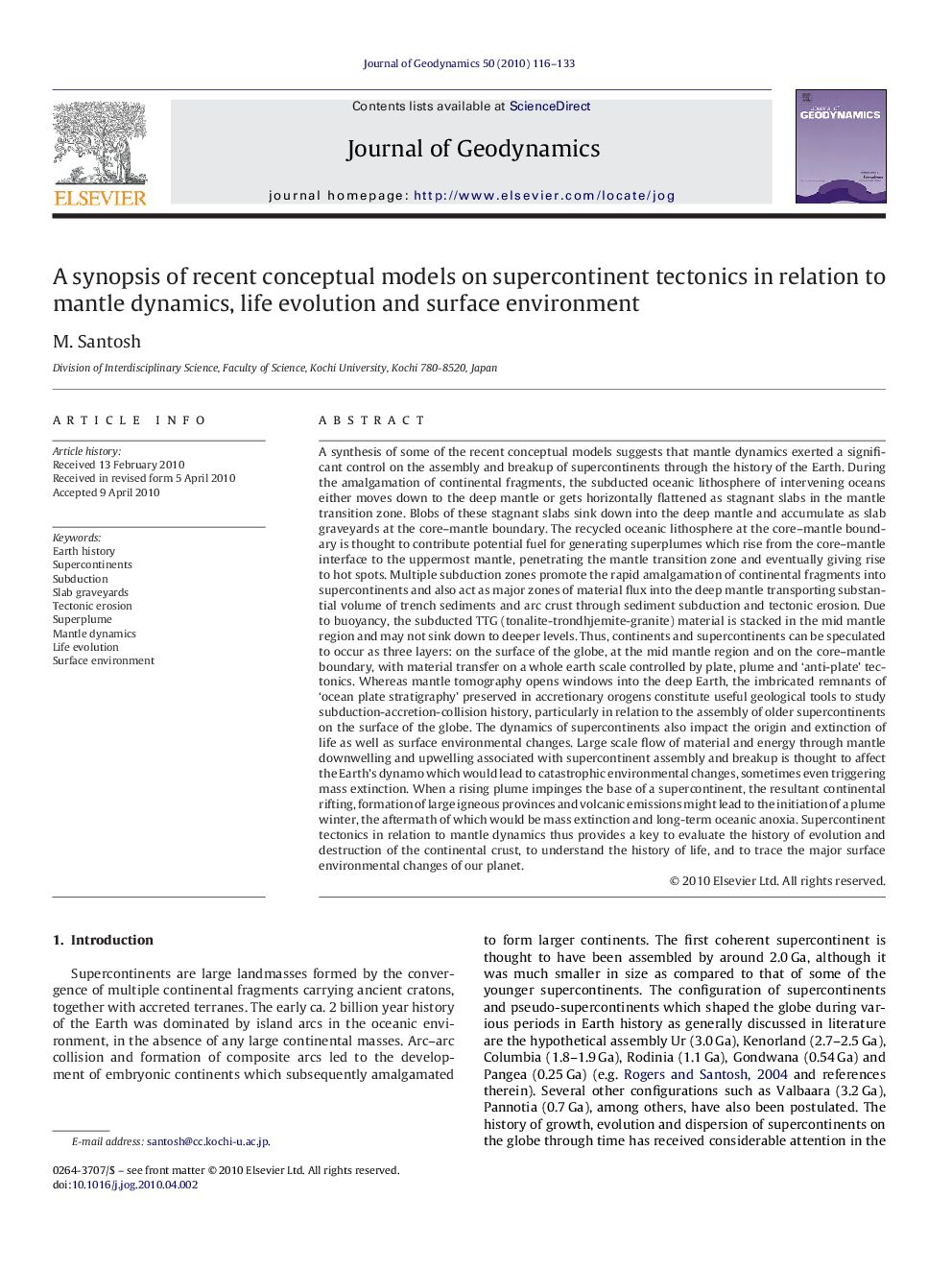| کد مقاله | کد نشریه | سال انتشار | مقاله انگلیسی | نسخه تمام متن |
|---|---|---|---|---|
| 4688528 | 1635798 | 2010 | 18 صفحه PDF | دانلود رایگان |

A synthesis of some of the recent conceptual models suggests that mantle dynamics exerted a significant control on the assembly and breakup of supercontinents through the history of the Earth. During the amalgamation of continental fragments, the subducted oceanic lithosphere of intervening oceans either moves down to the deep mantle or gets horizontally flattened as stagnant slabs in the mantle transition zone. Blobs of these stagnant slabs sink down into the deep mantle and accumulate as slab graveyards at the core–mantle boundary. The recycled oceanic lithosphere at the core–mantle boundary is thought to contribute potential fuel for generating superplumes which rise from the core–mantle interface to the uppermost mantle, penetrating the mantle transition zone and eventually giving rise to hot spots. Multiple subduction zones promote the rapid amalgamation of continental fragments into supercontinents and also act as major zones of material flux into the deep mantle transporting substantial volume of trench sediments and arc crust through sediment subduction and tectonic erosion. Due to buoyancy, the subducted TTG (tonalite-trondhjemite-granite) material is stacked in the mid mantle region and may not sink down to deeper levels. Thus, continents and supercontinents can be speculated to occur as three layers: on the surface of the globe, at the mid mantle region and on the core–mantle boundary, with material transfer on a whole earth scale controlled by plate, plume and ‘anti-plate’ tectonics. Whereas mantle tomography opens windows into the deep Earth, the imbricated remnants of ‘ocean plate stratigraphy’ preserved in accretionary orogens constitute useful geological tools to study subduction-accretion-collision history, particularly in relation to the assembly of older supercontinents on the surface of the globe. The dynamics of supercontinents also impact the origin and extinction of life as well as surface environmental changes. Large scale flow of material and energy through mantle downwelling and upwelling associated with supercontinent assembly and breakup is thought to affect the Earth's dynamo which would lead to catastrophic environmental changes, sometimes even triggering mass extinction. When a rising plume impinges the base of a supercontinent, the resultant continental rifting, formation of large igneous provinces and volcanic emissions might lead to the initiation of a plume winter, the aftermath of which would be mass extinction and long-term oceanic anoxia. Supercontinent tectonics in relation to mantle dynamics thus provides a key to evaluate the history of evolution and destruction of the continental crust, to understand the history of life, and to trace the major surface environmental changes of our planet.
Journal: Journal of Geodynamics - Volume 50, Issues 3–4, September 2010, Pages 116–133